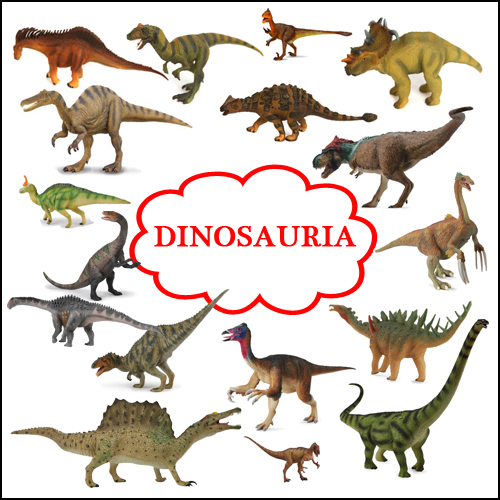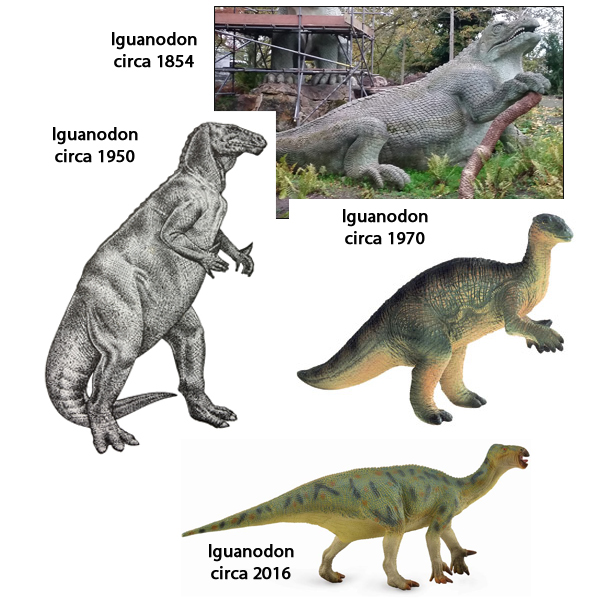Dinosaurs – A Weighty Problem
A weighty problem for palaeontologists studying non-avian dinosaurs is how to go about estimating the body mass of these long extinct creatures. Working out how to weigh a dinosaur is compounded when it comes to the Sauropodomorpha, as there are no living analogies for scientists to use as a reference, nothing remotely like an Argentinosaurus or an Apatosaurus alive today to provide a guide when it comes to the calculations. For those armoured dinosaurs too, finding a modern day analogy can be tricky. As for the Theropoda, attempting to scale up Tyrannosaurus rex based on the largest living theropod today, an ostrich (Struthio camelus), has obvious drawbacks.
Writing in the academic journal "Biological Reviews", researchers from the Royal Ontario Museum and the University of New England have helped to put the current methods used into context.
The Diverse Non-avian Dinosaurs – Estimating the Weight of Long Extinct Animals is a Challenge
Picture Credit: Everything Dinosaur
Two Main Methods of Weighing a Dinosaur
The debate about just how heavy dinosaurs were has raged for more than 150 years. A range of different methods are used to estimate body mass, but these can be split into two broad categories.
- Volumetric Density (VD) – which involves calculating a body weight based on a three-dimensional reconstruction of the animal – working from the skeleton outwards.
- Extant Scaling (ES) – measuring the size of limb bones in living animals, most usually the circumference of the femur (thigh bone) or the humerus (upper arm bone) and then scaling up the body weight based on measurements from the same bones in the skeleton of the dinosaur.
With no definitive non-avian dinosaur bodyweights known, there has been considerable debate as to which method was likely to produce the most robust and trustworthy results. Lead author of the study, Dr Nicolás Campione (University of New England), explained that the research team created an extensive database of dinosaur body weight estimates going back to 1905, the year when the most famous dinosaur of all T. rex was scientifically described. The scientists found that once scaling (ES) and reconstruction methods (VD), were compared, most estimates agreed. Apparent differences are the exception, not the rule.
Co-author of the study, Dr David Evans (Royal Ontario Museum), explained that these findings should give authors confidence, it does not seem to matter too much which calculation method is used, as these results indicate that mass estimates are largely consistent between the two approaches. The femur/humerus scaling method, which relies on relationships obtained directly from living animals of known body mass, provides a measure of accuracy, but often of low precision. In contrast, reconstructions that consider the whole skeleton provide precision, but of unknown accuracy. This is because reconstructions depend on our own subjective ideas about what extinct animals looked like, which have changed considerably overtime, a review of Iguanodon illustrations demonstrates this point succinctly.
Iguanodon's Body Plan has Been Revised Many Times
Picture Credit: Everything Dinosaur
Why Does Knowing the Body Weight of a Dinosaur Matter?
Having an estimate of a dinosaur's body weight is important. Body size, in particular the body mass, influences all aspects of the animal's life, including their diet, ability to maintain body temperature, reproduction and locomotion.
Dr Campione stated:
"If we know that we have a good estimate of a dinosaur's body mass, then we have a firm foundation from which to study and understand their life retrospectively."
The researchers recommend that future work seeking to estimate the sizes of non-avian dinosaurs, and other extinct animals, need to better-integrate the extant scaling and volumetric density methods as both approaches have been revealed to be more complementary than antagonistic.
Everything Dinosaur acknowledges the assistance of a media release from the Royal Ontario Museum in the compilation of this article.
The scientific paper: "The accuracy and precision of body mass estimation in non-avian dinosaurs" by Nicolás E. Campione and David C. Evans published in Biological Reviews.
Source: blog.everythingdinosaur.co.uk




Комментариев нет:
Отправить комментарий